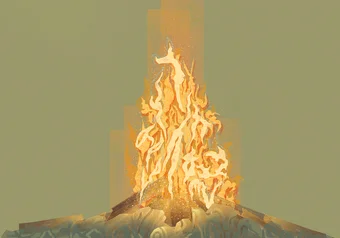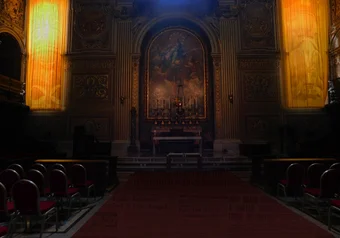In the fall of 2015, my grade 10 social studies class came upon one of the few mentions of Indigenous history in our textbook: a brief paragraph discussing Canada’s residential school system.
The system, which was intended to forcibly assimilate children and “kill the Indian in the child,” operated from the late 1800s to 1996, during which an estimated 150,000 First Nations, Métis, and Inuit children were taken from their families to attend 139 schools across the country. Many children attending the schools experienced physical, mental, and sexual abuse. Children often had their hair forcibly cut, and were punished for speaking their languages and practising their cultural traditions. The final report of the Truth and Reconciliation Commission concluded that the effects of the system constituted a form of cultural genocide, which the report describes as “the destruction of ... structures and practices that allow the [targeted] group to continue as a group.”
After reading the paragraph on residential schools, one of my classmates felt the need to comment, asking why we should care about this when it happened so long ago. Feeling compelled to respond, I replied that, actually, it wasn’t that long ago — after all, my own grandma was taken from her family at six years old, sent to St. Bernard’s, or Grouard, residential school in Alberta. She never saw her father again. By the time she finished school around age 16, he had died and her family was irrevocably damaged. Obviously, my classmate’s dismissal of the impact of residential schools was upsetting — but what upset me most was my teacher’s response.
“Would your grandma be able to come speak to the class about her experiences?”
“No,” I responded. “She died before I was born.”
At the time, it was simply the emotion of having to stand up for myself, and for the Indigenous community as a whole, as well as the mere fact of my grandmother’s death, that brought me to tears and angered me in that moment. In hindsight, it is the audacity of my teacher’s response to the situation that provokes the most rage and indignation in me.
In that moment, the onus was on me — not on my teacher — to respond to my classmate and defend the importance of learning Indigenous history. This was a particularly glaring issue considering nobody had ever questioned the importance of the extensive Québecois history taught in our French immersion classroom.
As I became upset, it was the only other Indigenous student in the class, and no one else, who comforted me. My teacher’s only response to me speaking about my personal experience of intergenerational trauma was to ask whether my grandma would be able to come and share her own traumatic experiences with our classroom, as if we existed solely to be instructional tools for settler classmates.
This memory — and similar moments when people, not knowing that I was Indigenous, made ignorant and racist comments around me — arose last summer, when I was living with my family in Kamloops and working remotely in a co-op position with the federal government.
On May 27, 2021, the Tk’emlúps te Secwépmec First Nation announced that preliminary findings from work conducted using ground-penetrating radar suggested the presence of 215 unmarked graves on the former grounds of the Kamloops Indian Residential School. In the following weeks and months, this announcement was followed by others detailing the discoveries of further unmarked graves found at residential school sites across the country. These discoveries were, of course, extremely upsetting; however, as an Indigenous person, they were not particularly surprising.
Indigenous people have spoken for generations about the abuse and deaths that occurred in residential schools. Though my grandmother did not often discuss her experiences at residential school, I nevertheless grew up with a keen awareness of the trauma and destruction that occurred in the residential school system, both within and outside of my family. Cycles of intergenerational trauma and addiction, as well as the loss of language and cultural practices, are consequences of colonialism that have directly impacted myself and my loved ones. I continue to struggle with feelings of liminality, being both Indigenous and a settler, but not fully comfortable within either world.
Sitting in government meetings last summer, and hearing settler colleagues in Ottawa express their shock and sadness over events that were both closer to home and not at all surprising to Indigenous communities, was extremely upsetting. These reactions and others like them were often more upsetting for me than the continued discovery of unmarked mass graves in the past year. They acted as if they could not believe what had happened, even though they had never bothered to listen to what Indigenous peoples have told them for decades about the devastation and destruction of colonization.
Though I am happy to see people wearing orange shirts and proclaiming that every child matters, it is difficult for that happiness to not be overwhelmed by sadness and anger that it has taken this long. That so many were and continue to be unwilling to believe or even to listen to Indigenous peoples’ stories and perspectives.
It is also continuously upsetting to see settler individuals’ desire for Indigenous individuals to provide documentation for their Indigeneity.
While it is important to prevent instances of settlers claiming Indigeneity in order to gain opportunities, too often calls for documentation are really just continuations of racist and exclusionary government policies. For me, the most documentation that I could provide for my Indigeneity would be proof that my grandmother was stolen from her family and forced to attend residential school — this is documentation that I refuse to provide, because to me, it would represent an affirmation of the colonial system and an adherence to its policies and rules.
With regard to Indigenous documentation and similar matters, I would ask that settler individuals truly listen to Indigenous individuals. There is more than enough information on the effects of colonialism in the world at this point — to me, at this point, it is unnecessary to either demand further evidence when copious evidence already exists, or to ask Indigenous individuals to perform the labour of repeatedly explaining our traumas. My hope is that, in the future, children like me will have individuals in schools who can advocate for them, rather than having to justify their own existences — and I hope that someday I will be one of the teachers who can do so.
Share this article
First online




